This review is a bit unusual as we usually review airlines. Still, we figured it would fit the blog since China Rail offers a Business Class product on their high-speed trains, intended to compete with domestic air travel.
The train from Shanghai to Shenzhen takes about 8 hours if you factor in that the station is in a very central location as well as the fact that you only need to be at the train station around 30 minutes before departure (The security check is a breeze compared to an airport) this offers a competitive travel time compared to flying.
While the flight is around 3 hours, all the extra buffer time needed, travel time to and from the airport, and the high frequency of delays and cancellations on Chinese domestic flights make the train an attractive option. The train station in Shanghai is also right next to Shanghai Hongqiao Airport, so you can easily connect to an international flight if needed.
The train offers Second, First, and Business Class orders from least to most premium (Unlike airlines, where First Class is usually the most luxurious one). Second Class has a 3-2 configuration, and First Class has 2-2 seating, with the only real difference apart from that being the seat pitch, which is slightly bigger in First Class, and a snack box being offered. On the other hand, Business Class provides a fully reclining seat, similar to what you’d find on an airplane, as well as a 1-2 configuration for more space and a full meal.
The price is also quite competitive, with fixed prices for all journeys based on the duration. For a long trip like this, the price for Business Class was about 2600 RMB (Around 350 USD), First Class around 1300¥ and Second Class around 800¥. When offered the possibility to “fly” business class on a flight for a similar price as an economy class, I could not turn it down. So, was it worth the price, or is this a product that looks good on paper but doesn’t live up to the promise?
Lounge
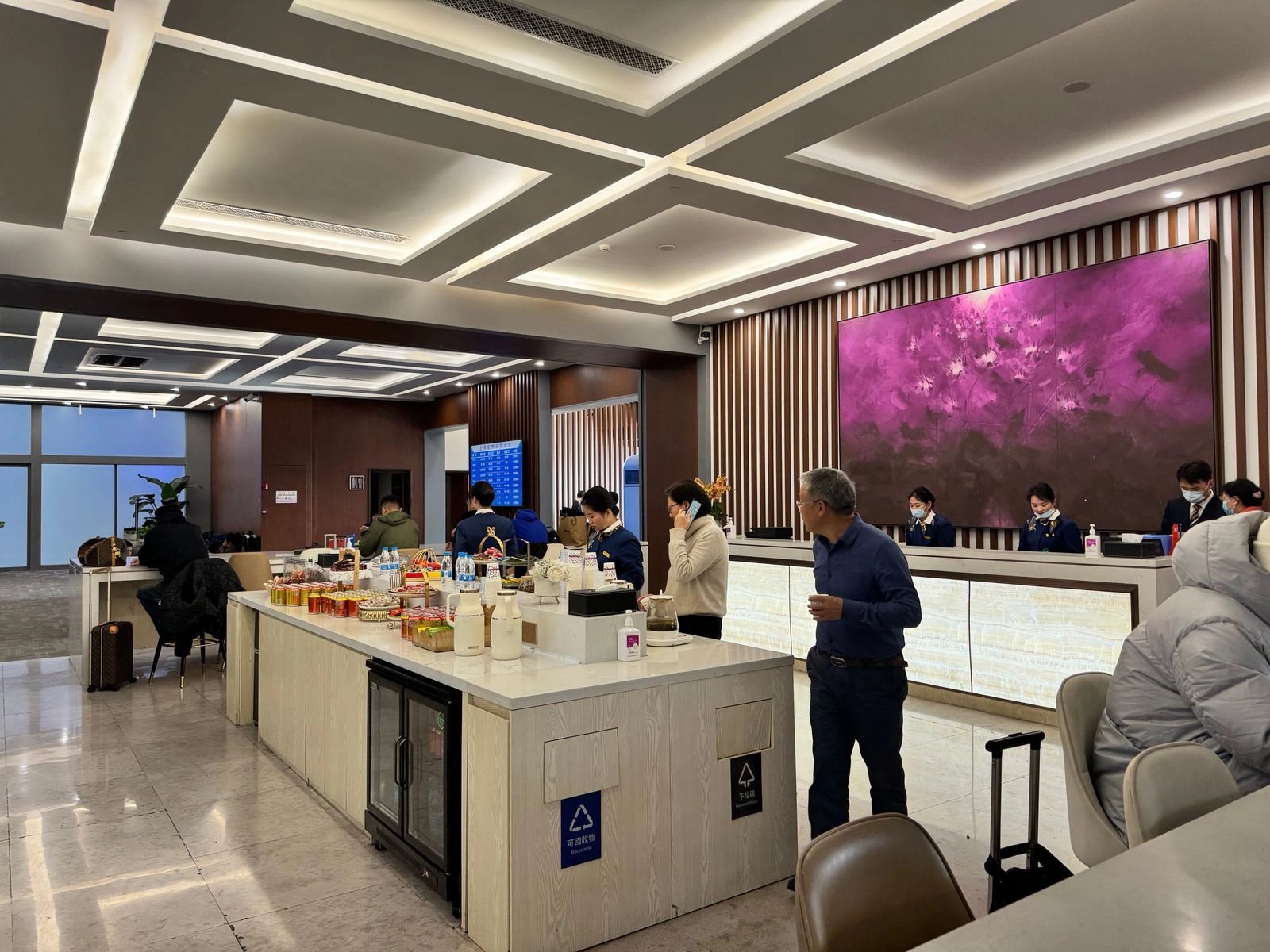
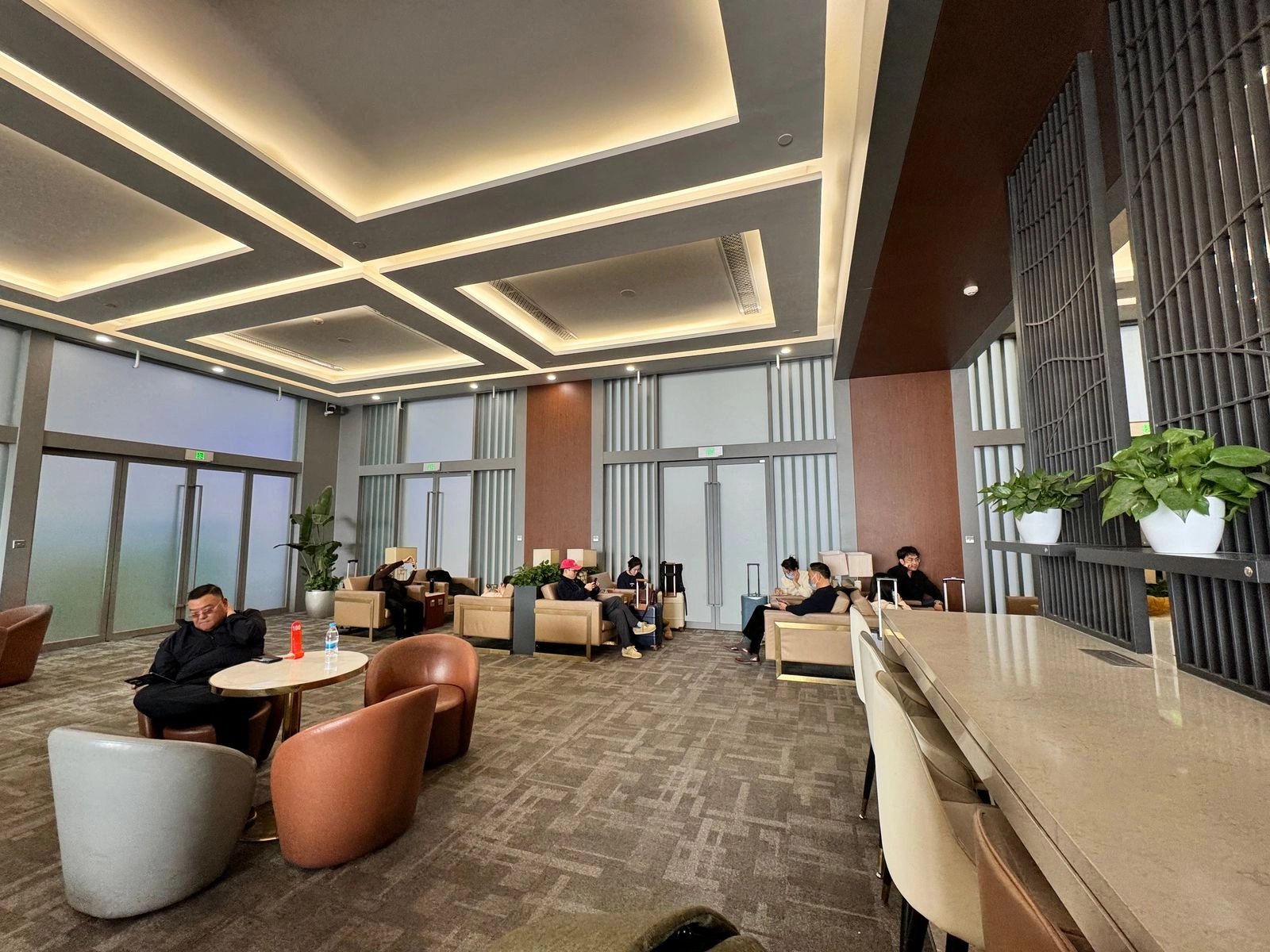
Another part of the Business Class offering is access to the lounge and a fast-track “VIP Lane” when checking the ticket. However, since I’m not a Chinese citizen, I don’t have a Chinese ID card, which means I have to use the manual check-in counter regardless of service class, and it just happens to be the same as the VIP lane. As a result, you always get fast track regardless of Class if you don’t have a Chinese ID card.
In Shanghai Hongqiao station, the lounge is located immediately after security, as the security check is the entrance to the lounge. The lounge, however, was quite small, considering the size of the station and the number of trains departing from it, so it was very crowded.
It offers a small selection of soft drinks and snacks, nothing remarkable, and a service desk. Interestingly, when we entered, they gave us a number and told us they would come and pick us up in time for departure (Reminding me of Lufthansa’s First Class Terminal); however, they didn’t follow through on this promise, and we made our way to the platform.
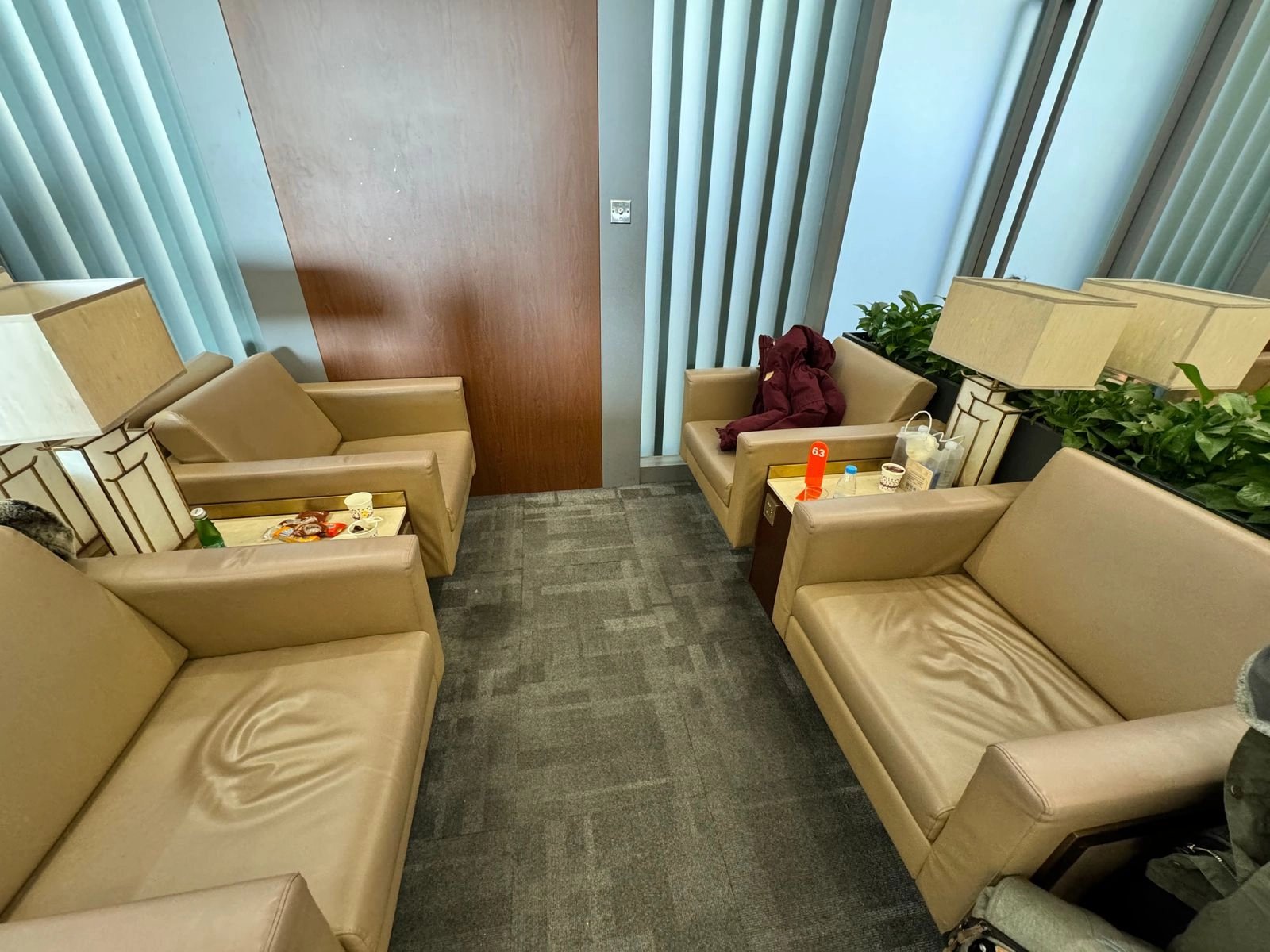
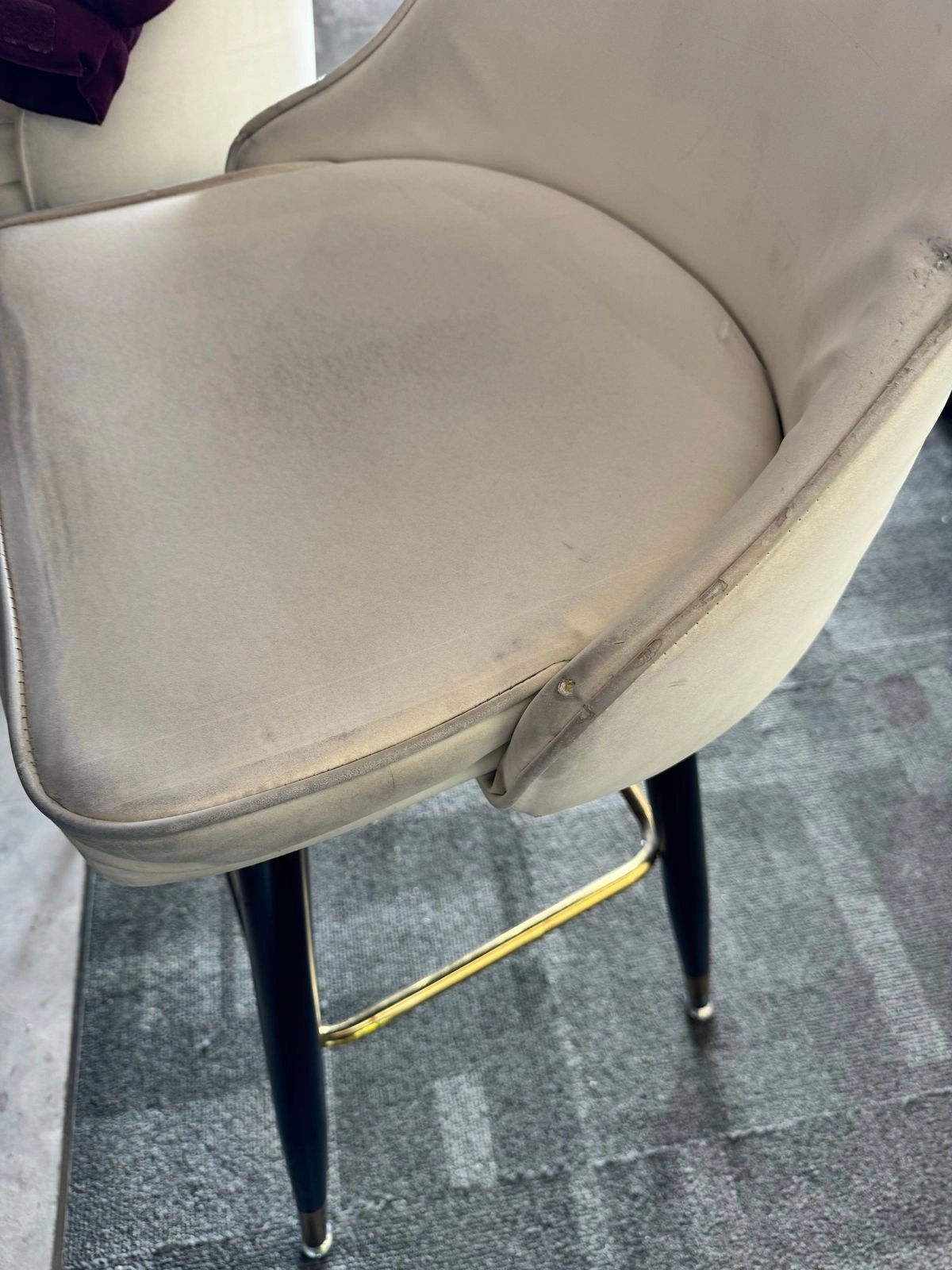
The lounge is starting to show its age, with chairs being worn and the overall design quite dated. You’ll know what I mean if you’ve ever been to an Air China lounge at a Chinese airport. That said, it still offers a nice place to sit and relax before the train departs, slightly calmer than the main station.
Seat & Cabin
The seat is a fully reclining lie-flat seat, very similar at first glance to what you’d find on a plane. The seats also rotate (this is true for all cabins), so they always face the direction of travel, even when the train turns around at certain cul-de-sac stations. In Business Class, however, you’re free to choose the direction you want to face, provided that you’ve booked two or more seats on adjacent rows. For example, if you’re a group of 4 with seats 01AB and 02AB, you can arrange them facing each other in a QSuite style.
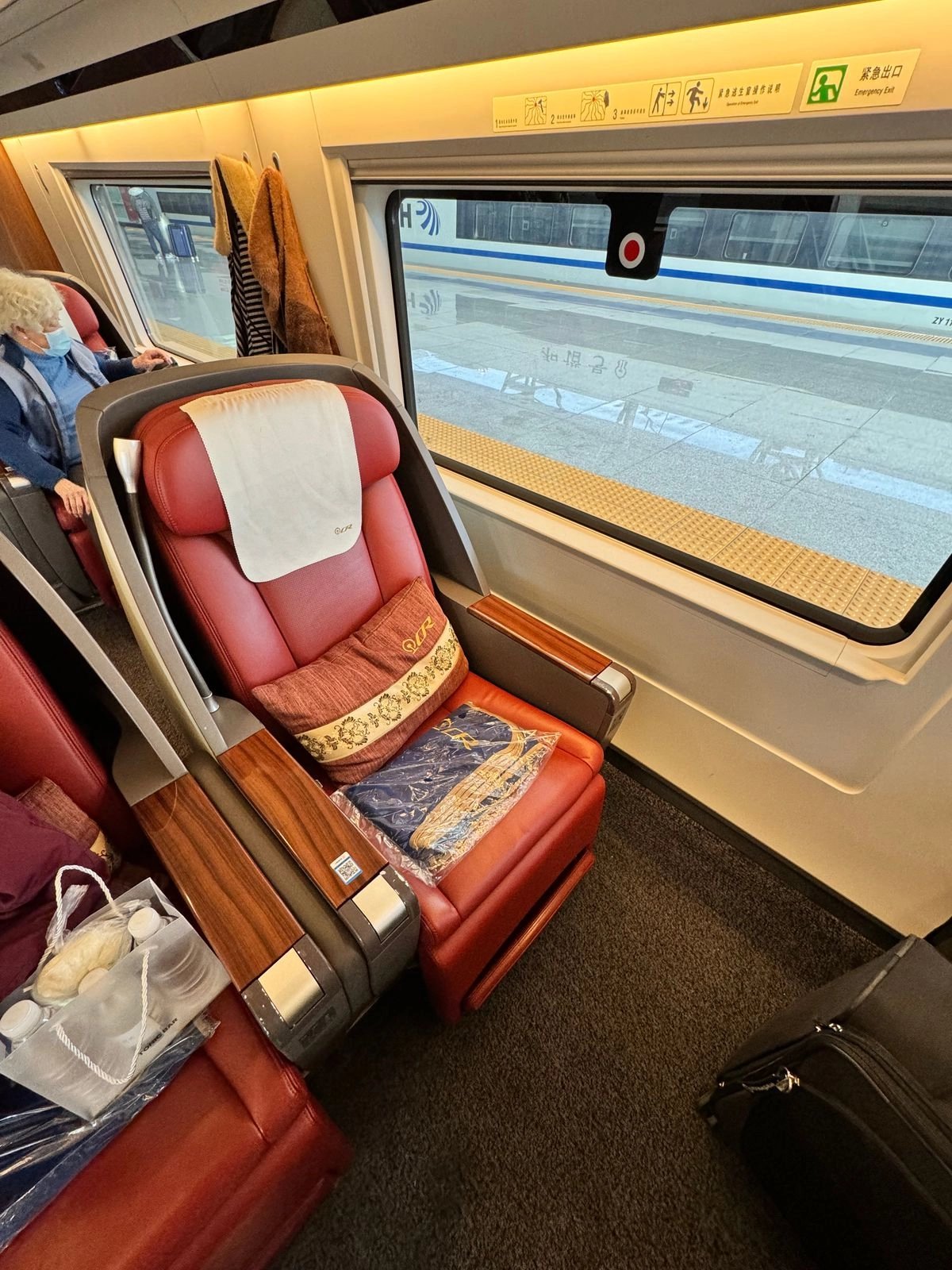
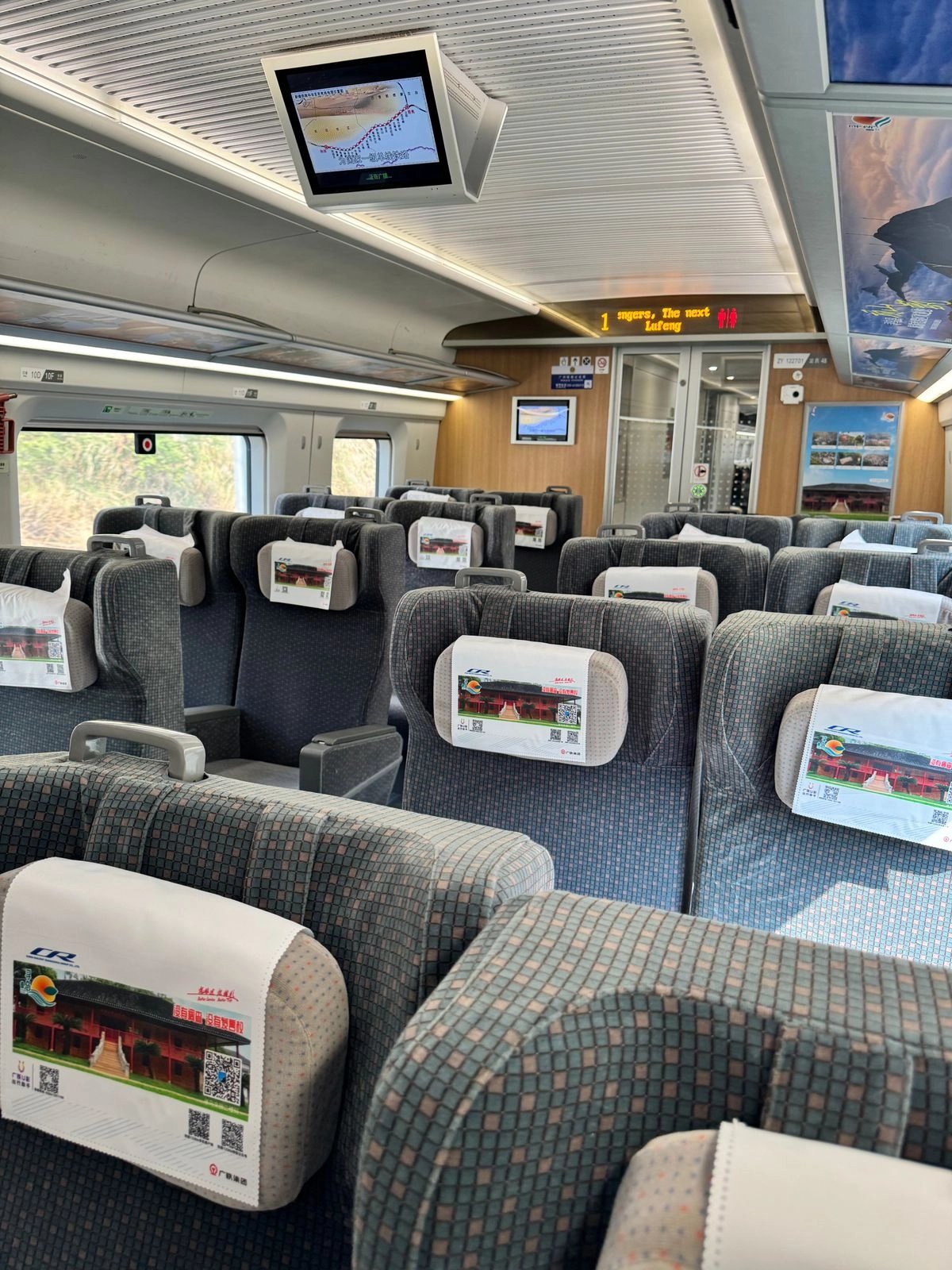
However, that’s where the similarities with QSuite or any other premium airline cabin ends. While the seats might look puffy and comfortable in a photo, they are as hard as a church bench. There is simply no way to sleep comfortably on them. If you’ve ever experienced a deflated chair in SAS Business Class (The air mattress type seat), you know what to compare it to.
Overall, the seats look great on paper (Or in a photo) but are terrible. The First and Second-class seats are much more comfortable, although the layout is a more traditional train layout, as seen in the photo above.
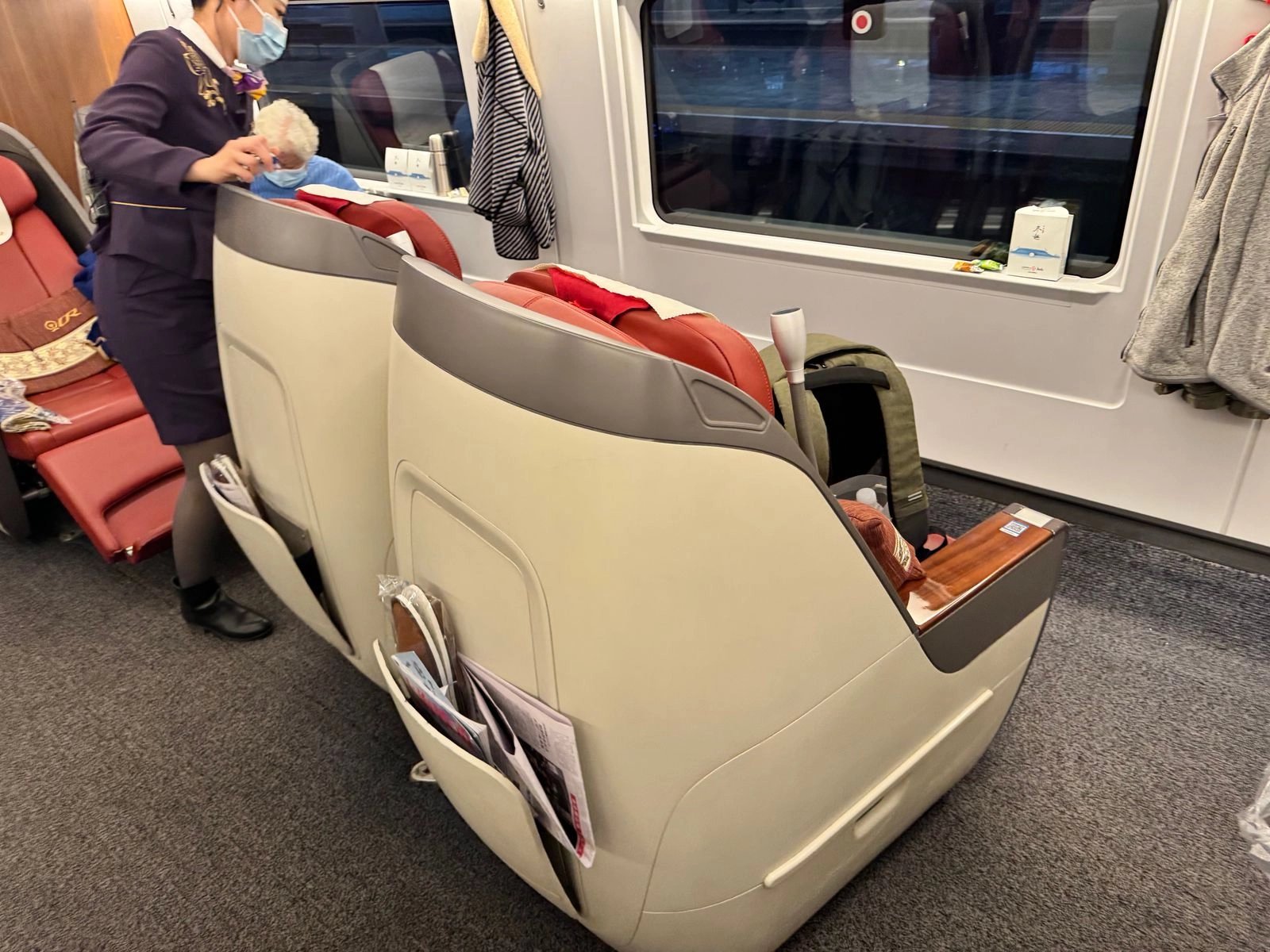
Food & Drink Service
A snack box is offered in both First Class and Business Class on longer trips. It contains a large variety of savory snacks, which are quite good. They range from crackers to beef jerky and crab roe-flavored sunflower seeds (surprisingly good!).
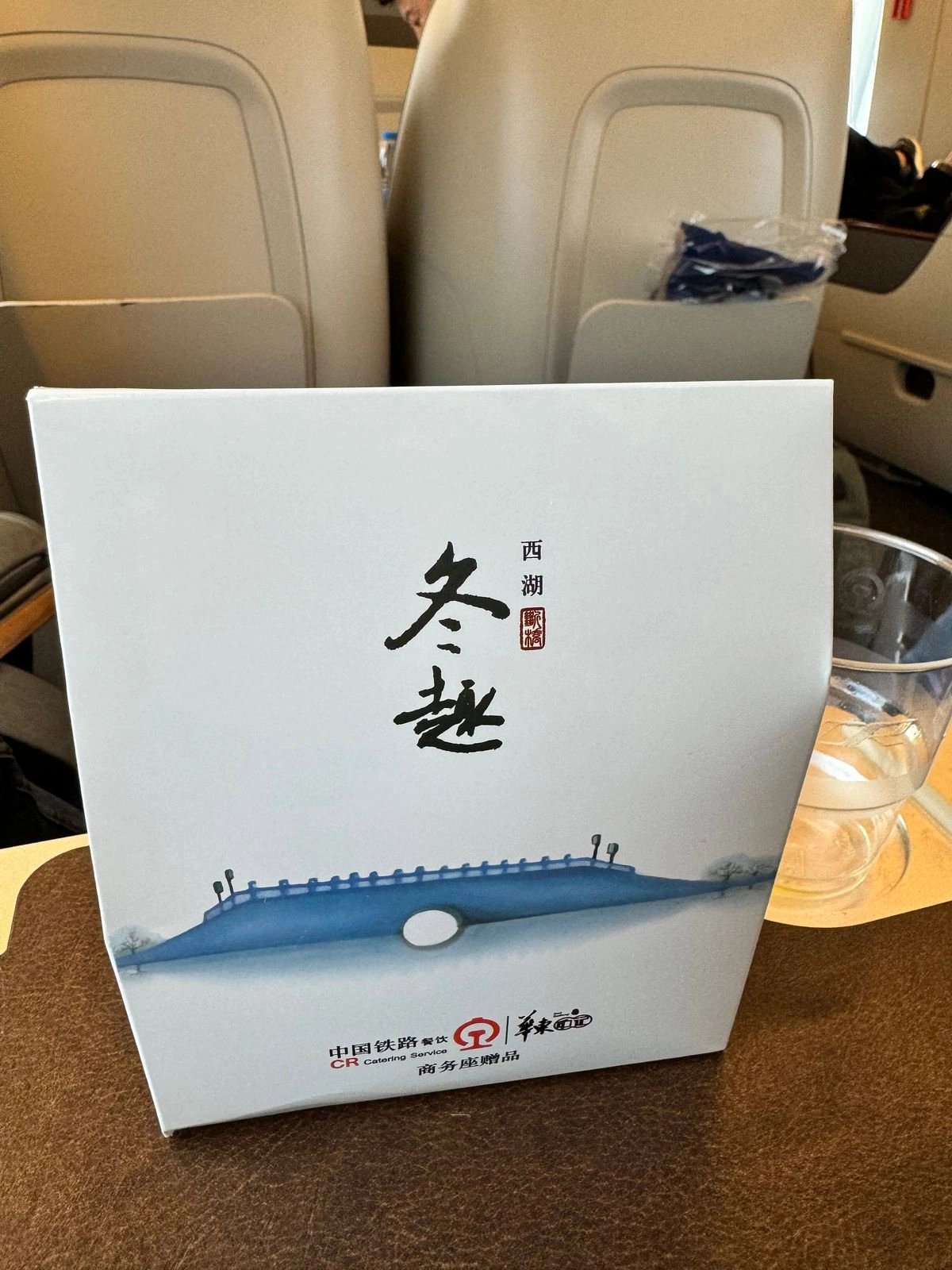
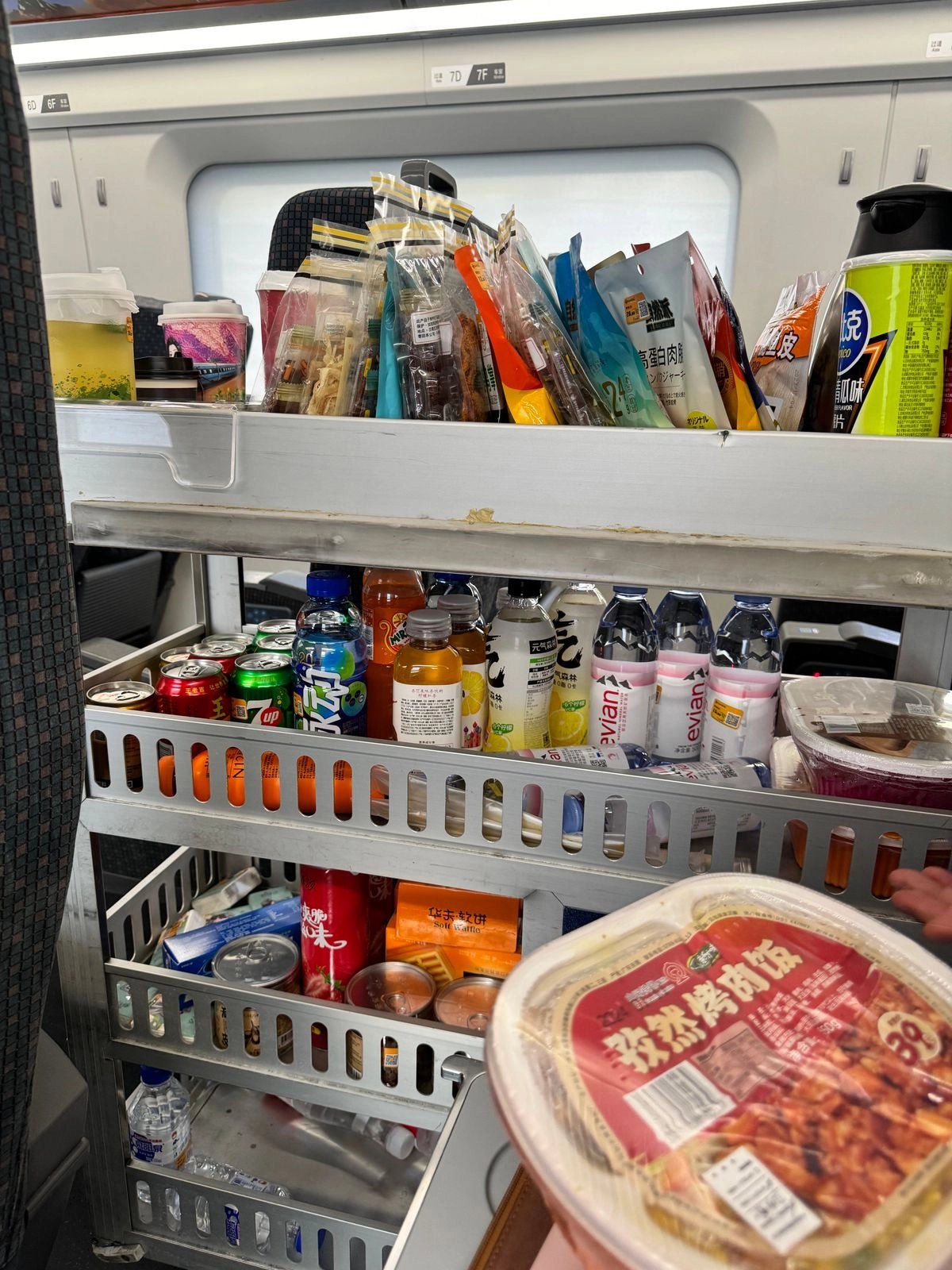
As for drinks, the only things on offer are non-alcoholic, some juice, water, and of course, tea and coffee. In addition, a person is walking the train with a cart selling milk tea, snacks, and sodas. These are, however, charged, even in business class. They also sell the same meal packets included in business class.
Finally, there is a meal offering on longer trips like this one, a pre-packaged hot meal served in a box that would look more like home on an economy class flight. They offered two options: beef and shrimp. I opted for the beef version, which was passable, certainly not bad, but nothing impressive. Even less impressive is that you can buy this meal for about 40 RMB in any cabin from the snacks and drinks cart.
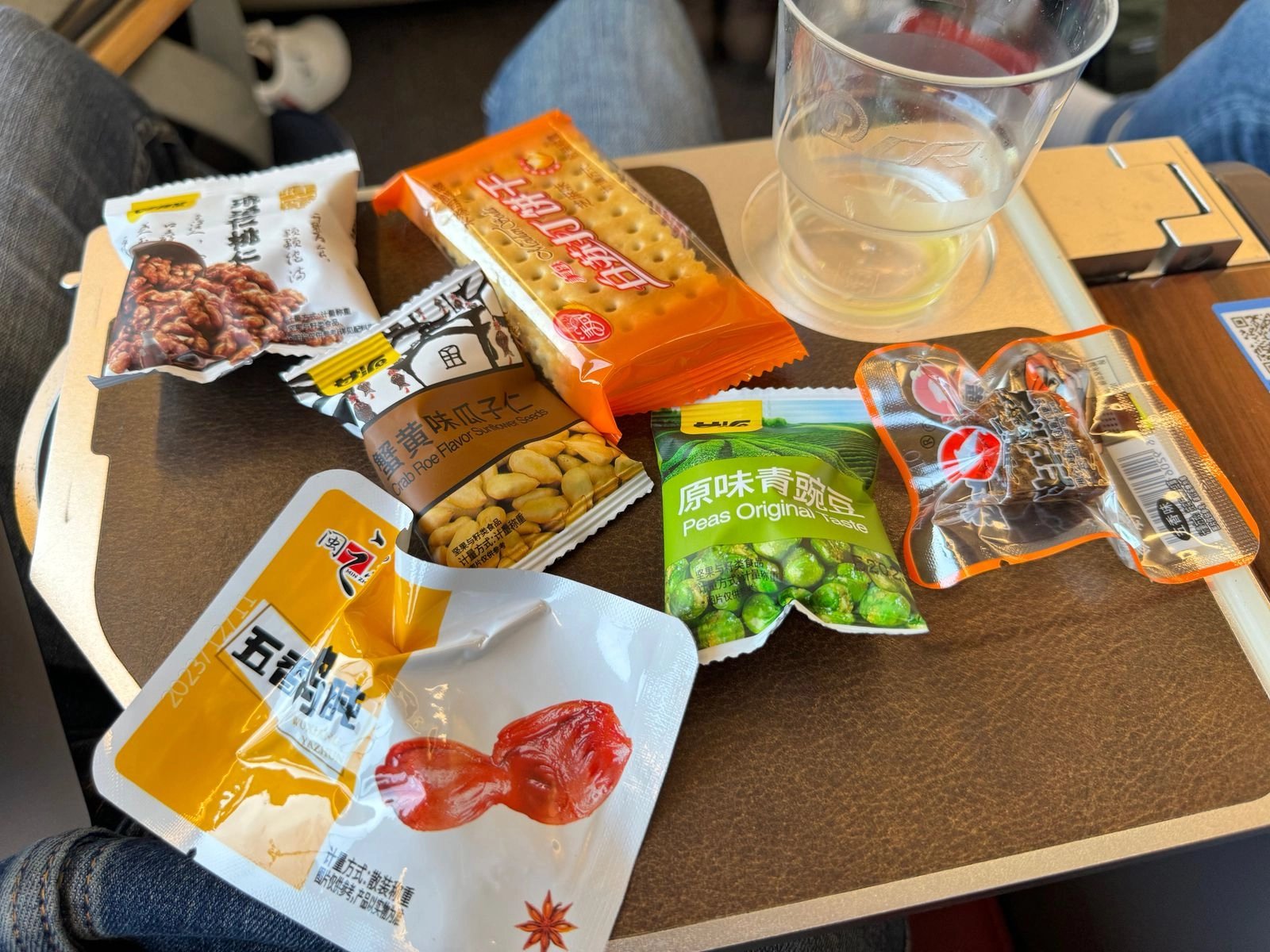
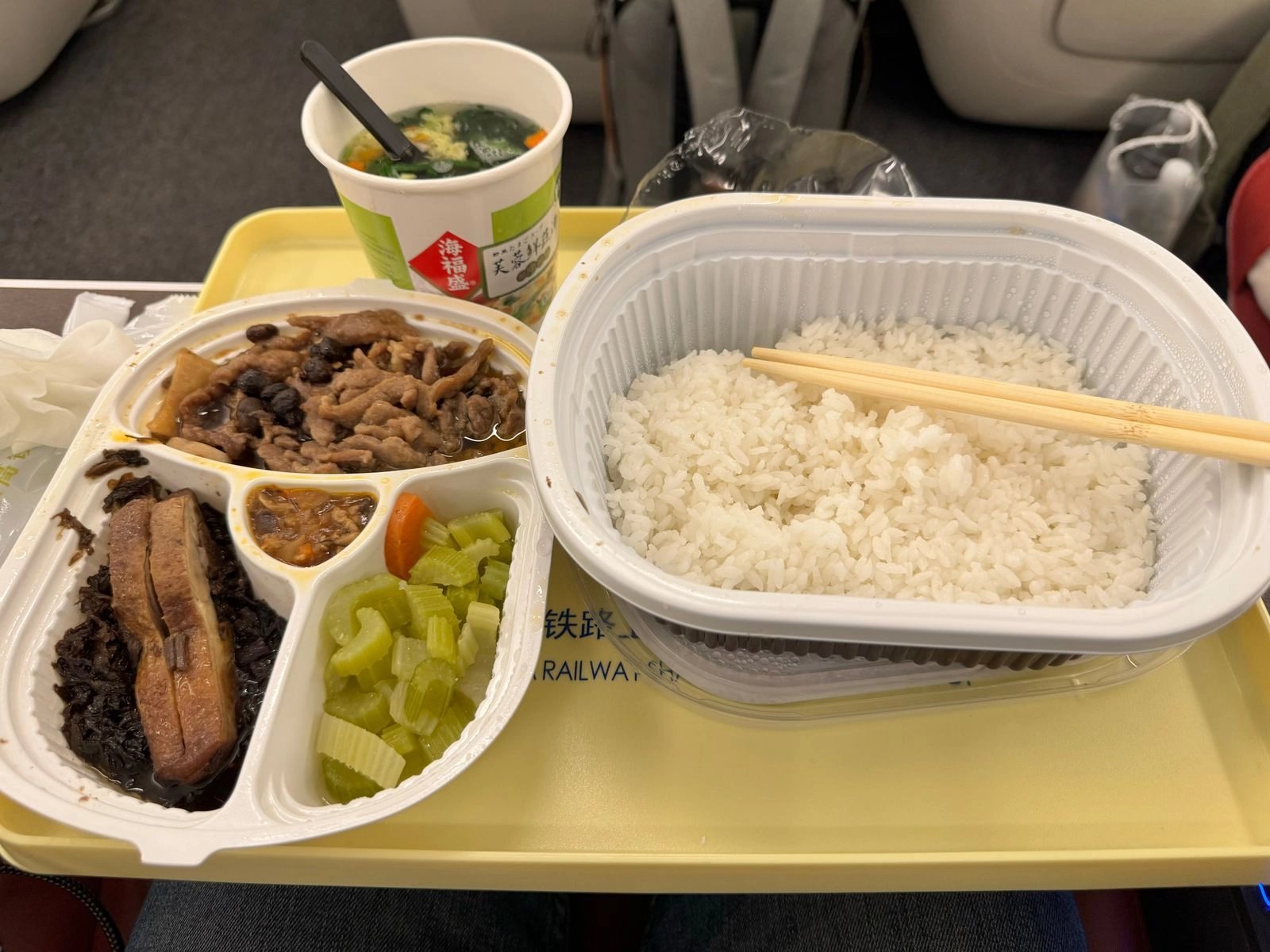
Also, using the QR code on your seat, you can pre-order meals from restaurants along the way, which they then bring onto the train and to your seat! This does come with the caveat that it (like many things in China) requires the WeChat app and some basic Chinese language skills to understand the menu.
If you’re a foreigner, both of these might provide a challenge, but if you can overcome them, the selection is impressive, ranging from local mom-and-pop food stalls to big chains like McDonald’s and Dairy Queen. The selection will vary by station, and orders close 1 hour before the train arrives at a station, so make sure to order in time.
Summary
While the prospect of a luxurious train ride for 3000¥ certainly sounded promising, sadly, my experience on the Business Class bullet train was similar to many other Chinese “luxury” products: They look great on the surface but dig just a little deeper, and it falls apart. Since the price difference from First Class (the best value in my opinion) is 1300 RMB and the only improvements are the seat, the lounge, and the free food, you have to ask yourself, are those three worth the 1300 RMB?
In my opinion, that’s a resounding “No,” the food costs 40¥ if you want it (Though there are plenty of better options), the seat was terrible, and the lounge wasn’t that great.
1300¥ goes a long way in China, and you’re much better off spending this money on something else, like a luxury meal, and having a more comfortable experience in First or Second class. The train service is excellent though, offering fast and smooth service with few delays compared to domestic flights.
Read More
Make sure to also check these other review posts:
 Aeromexico Rewards
Aeromexico Rewards Air Canada Aeroplan
Air Canada Aeroplan
 Air France / KLM Flying Blue
Air France / KLM Flying Blue Alaska MileagePlan
Alaska MileagePlan American Airlines AAdvantage
American Airlines AAdvantage Azul Fidelidade
Azul Fidelidade Delta SkyMiles
Delta SkyMiles Etihad Guest
Etihad Guest GOL Smiles
GOL Smiles Jetblue TrueBlue
Jetblue TrueBlue SAS EuroBonus
SAS EuroBonus Turkish Miles&Smiles
Turkish Miles&Smiles United MileagePlus
United MileagePlus Virgin Atlantic Flying Club
Virgin Atlantic Flying Club Virgin Australia Velocity
Virgin Australia Velocity